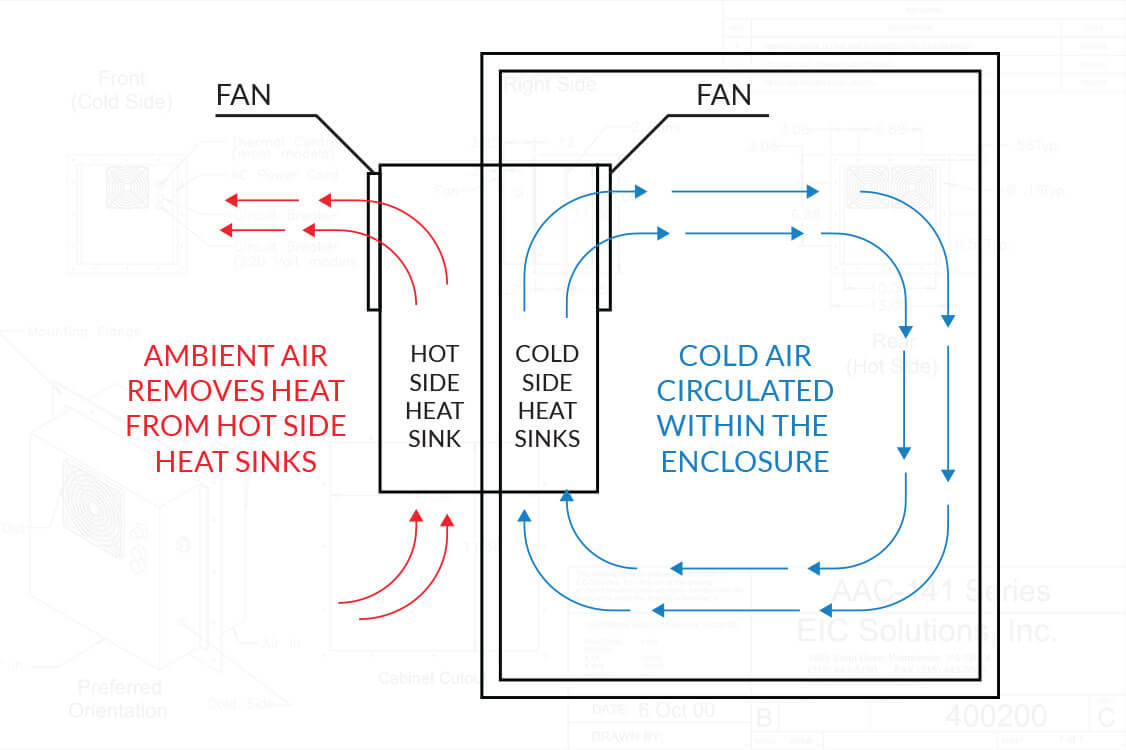
In 1834, Jean Peltier discovered that by passing a current through two dissimilar conductors, the junction of those materials will either absorb or release heat, depending on the direction of the current flow. Thirteen years earlier, Thomas Seebeck had discovered current would flow when you placed a temperature gradient across the junction of two dissimilar metals. These two discoveries were the basis of thermoelectrics. With the advent of modern semiconductors, thermoelectric assemblies became practical for real-world applications and are now found in everything from consumer goods to spacecraft.
The underlying technology that permits construction of these thermoelectric assemblies is now referred to as “The Peltier Effect”. It utilizes two elements of a semiconductor which is constructed from doped Bismuth Telluride. Upon application of a direct current (DC) power source, these devices generate a cooling action, countered by a generation of heat on the opposite side of the device. EIC’s Thermoelectric Air Conditioners operate on this principle so there is no compressor and no expensive, ozone-depleting CFC’s.
EIC’s Peltier assemblies use Thermoelectric “modules” sandwiched between high-performance aluminum heat sinks and one or more high CFM axial fans. Peltier assemblies are coupled with a patented electronic design to “pump” the heat from the inside of an enclosure to the outside, without exposing delicate electronics to any outside air or contaminates. Through proper packaging, EIC has harnessed the cooling properties of these thermoelectric modules into modular air conditioners that can dissipate typical loads of 200, 400, 800, 1500, 2500, 3500 or 5500 BTU/HR.